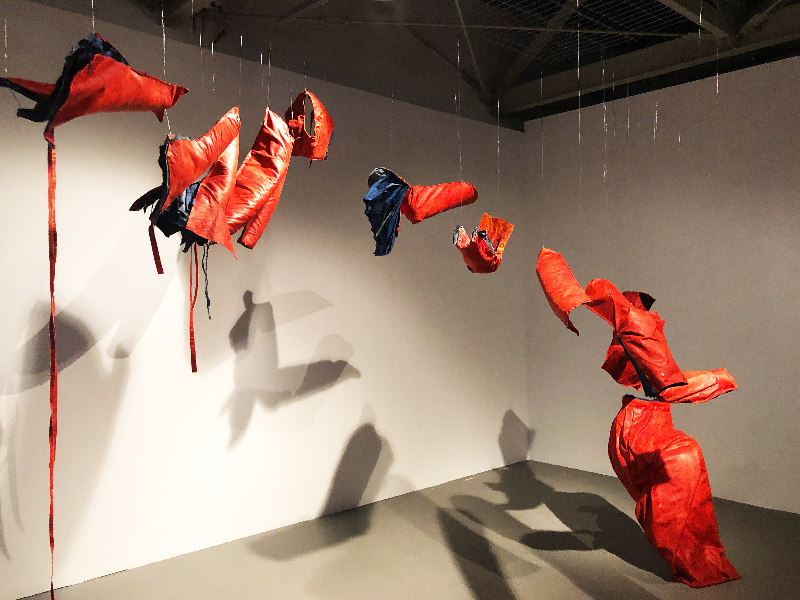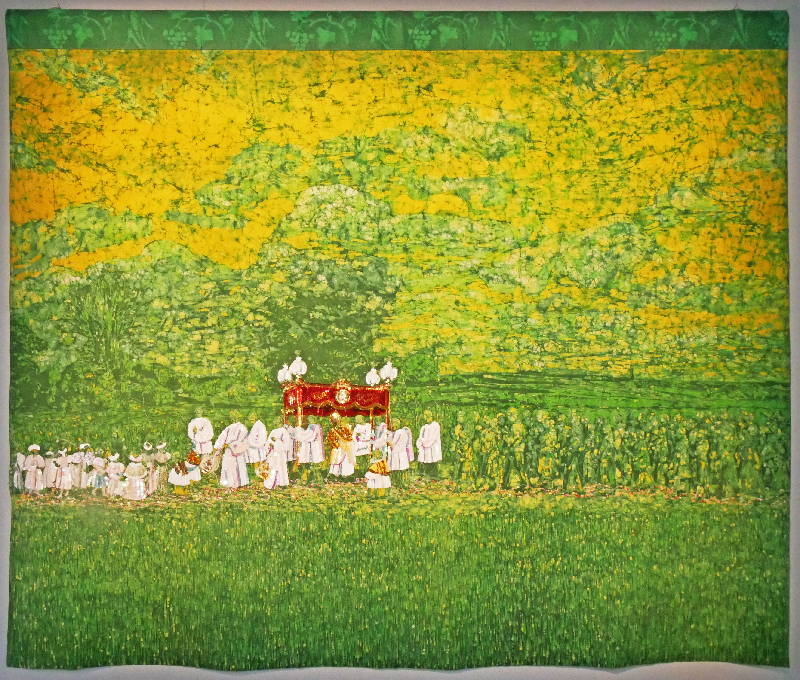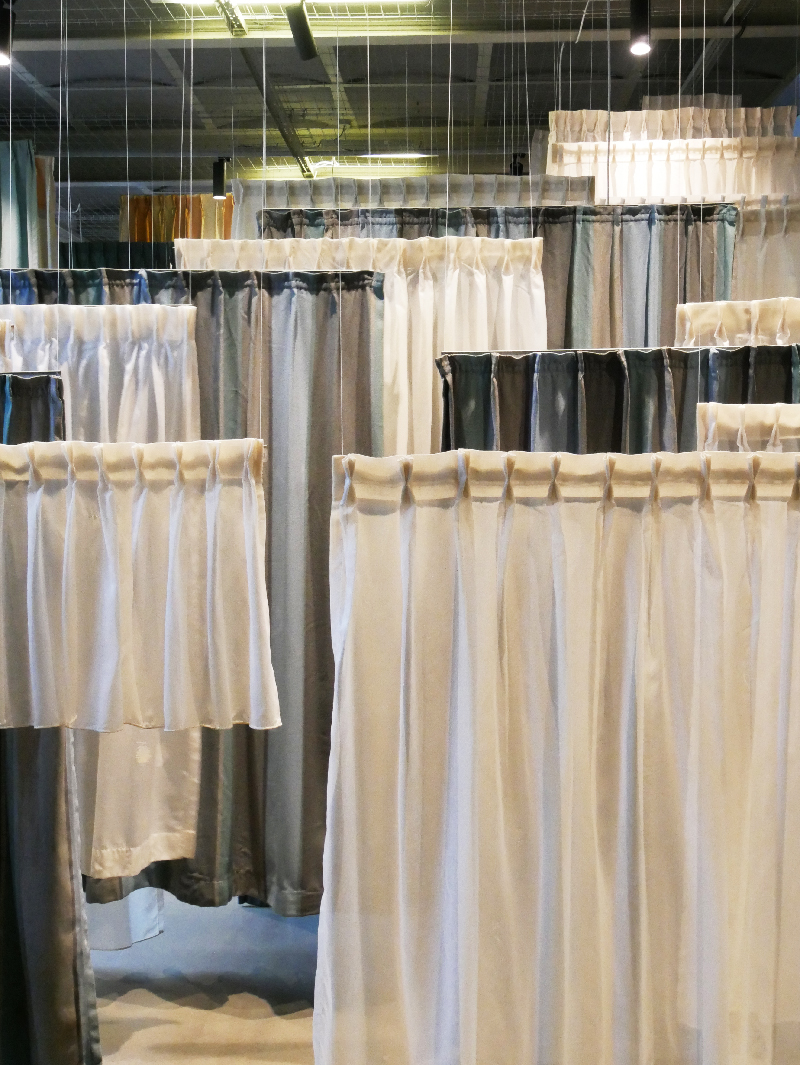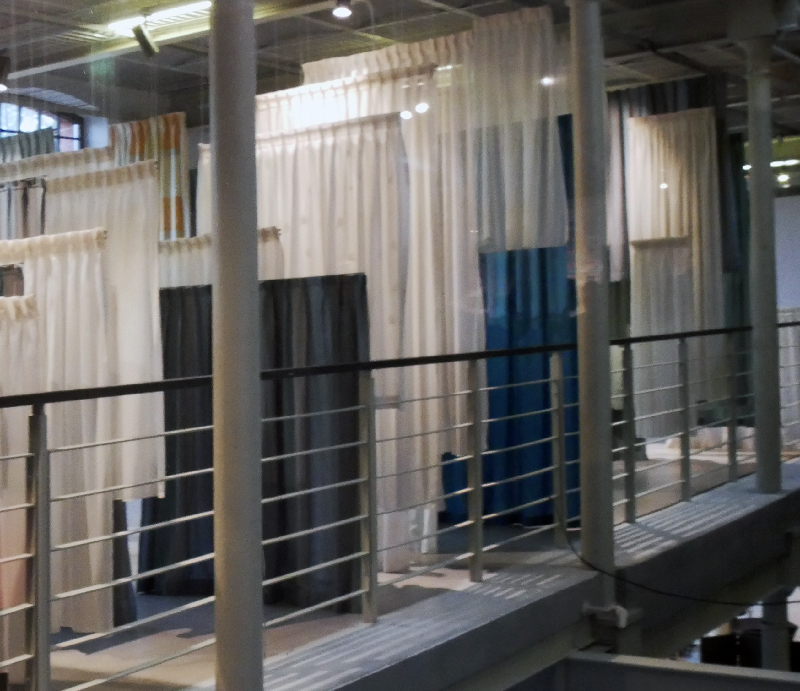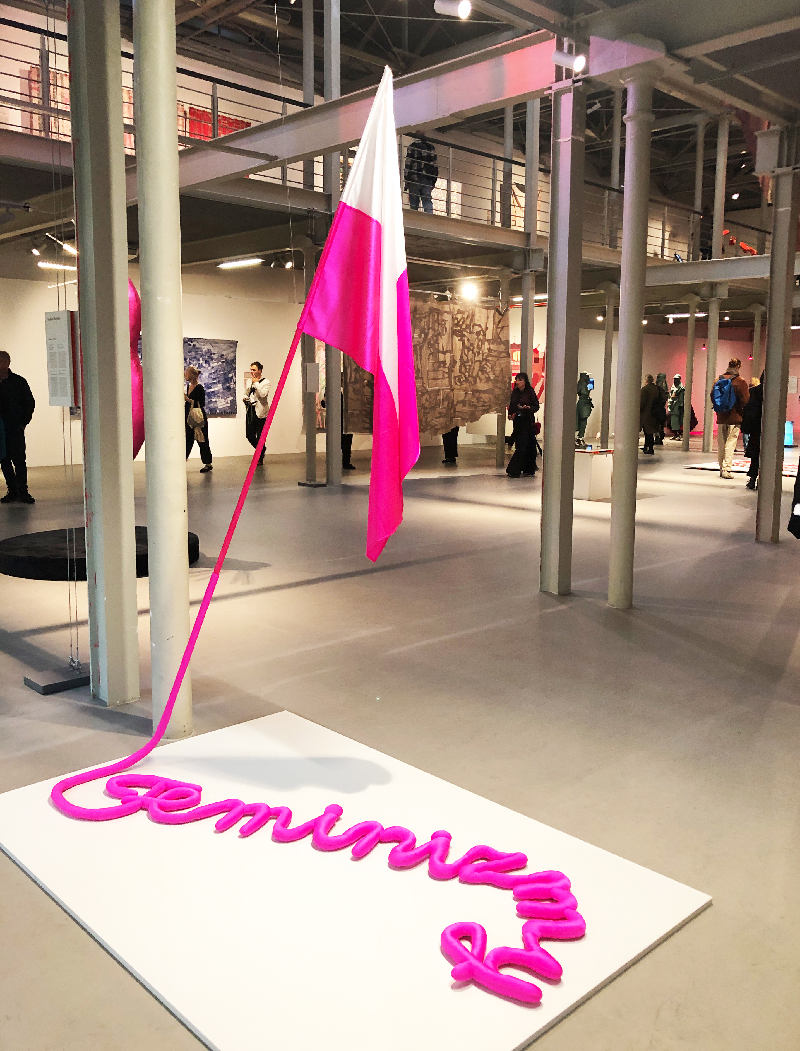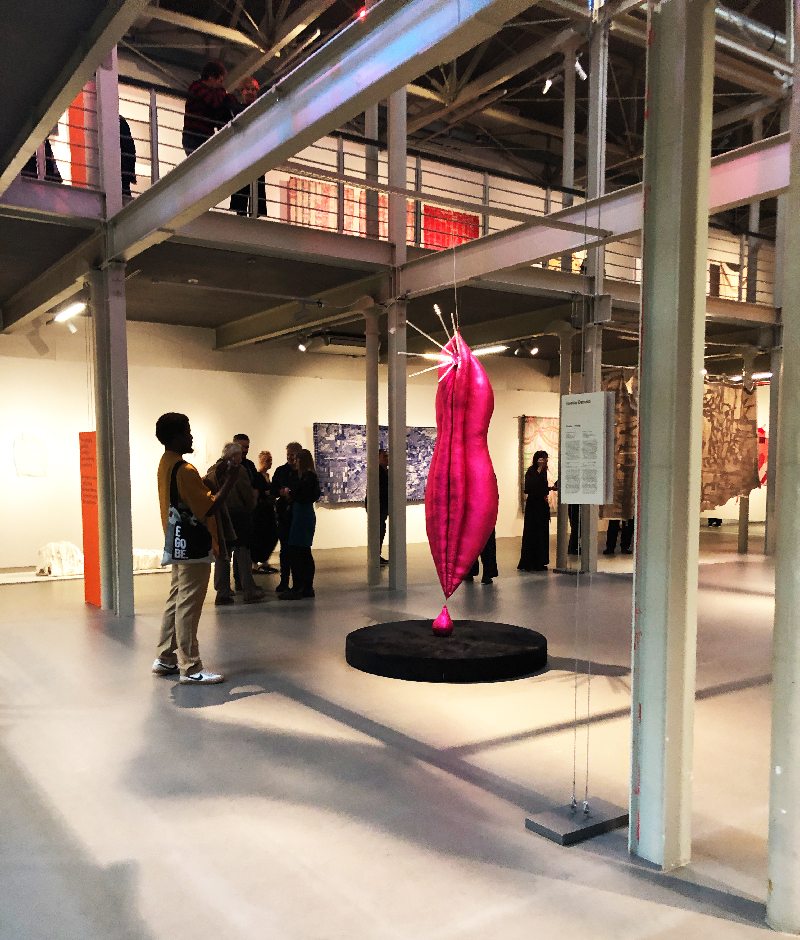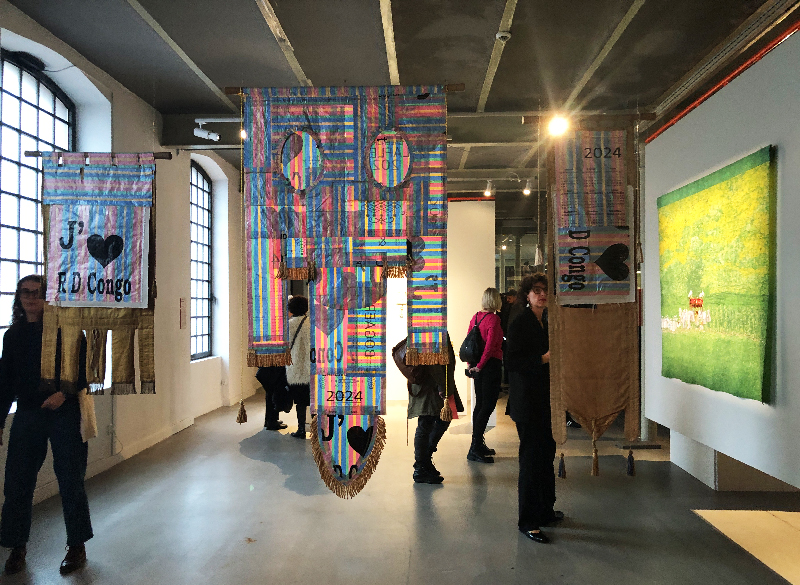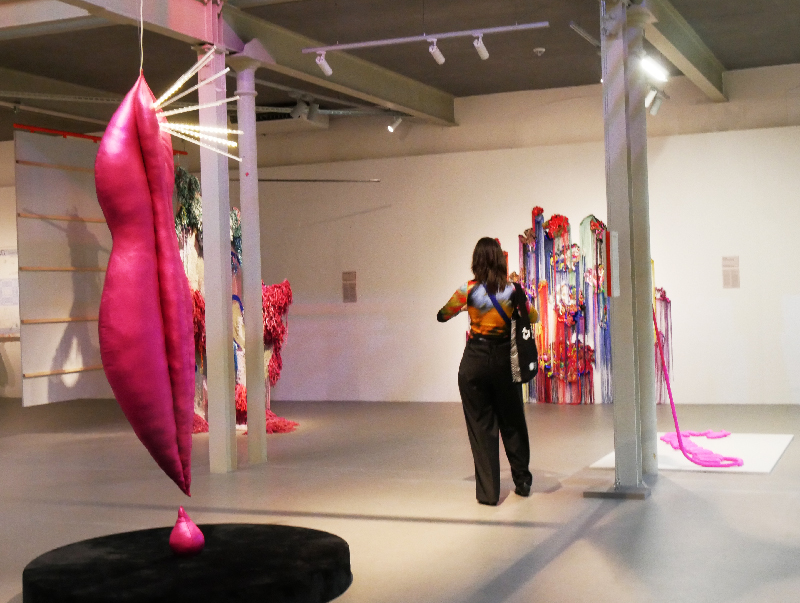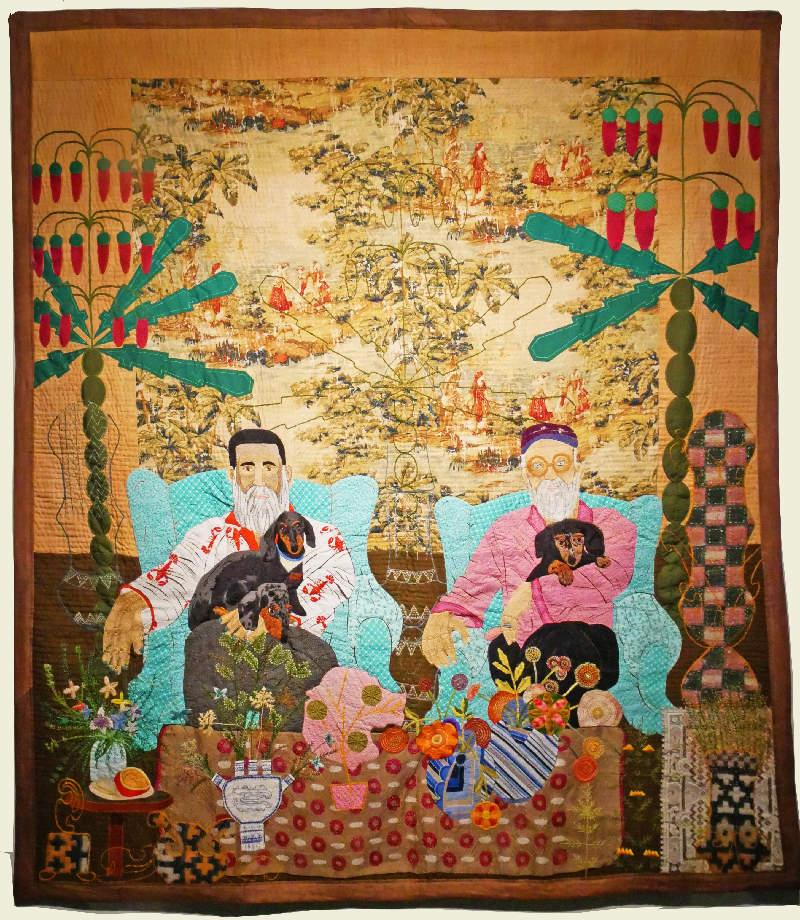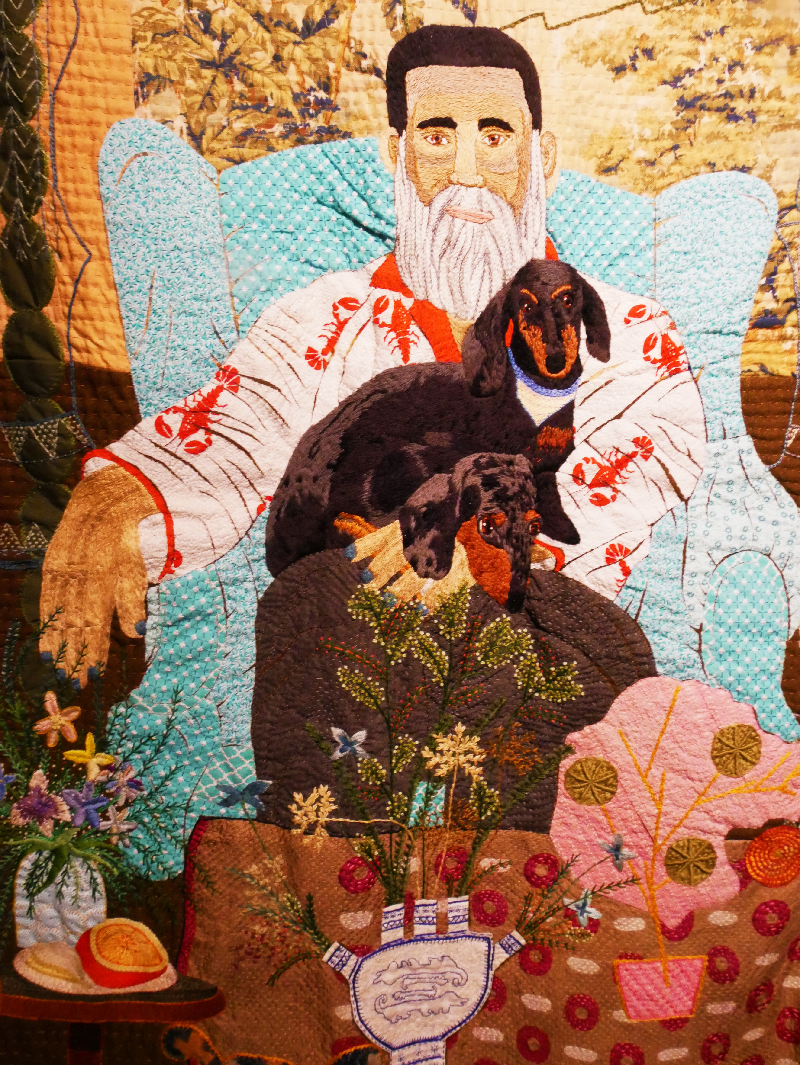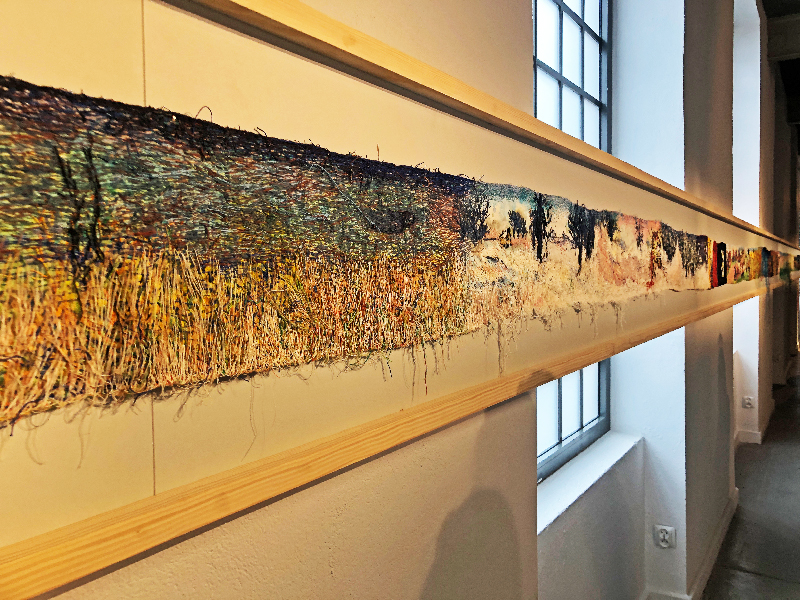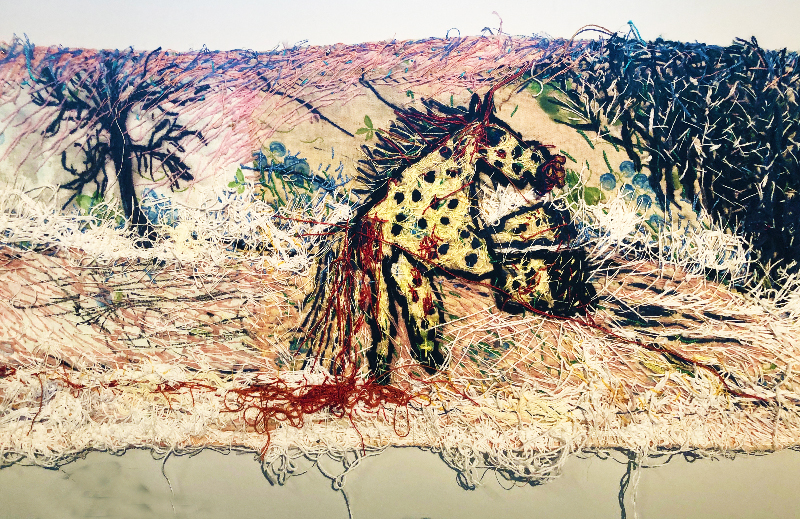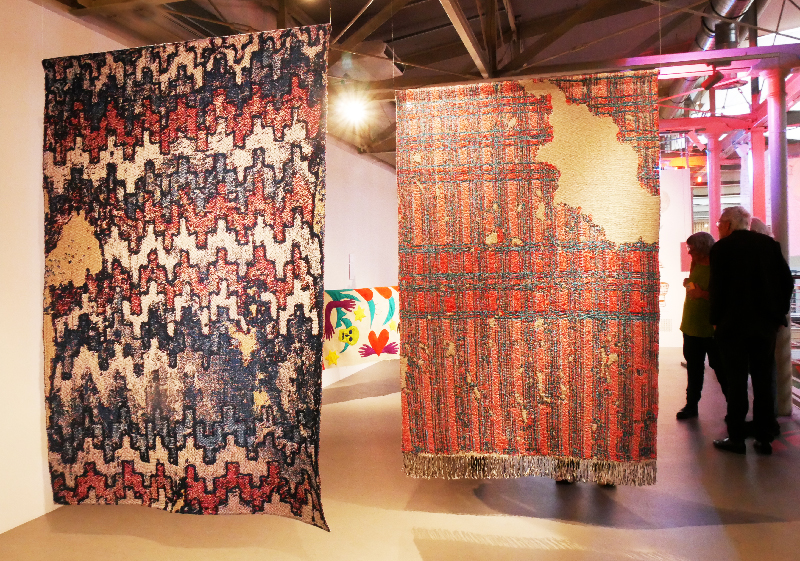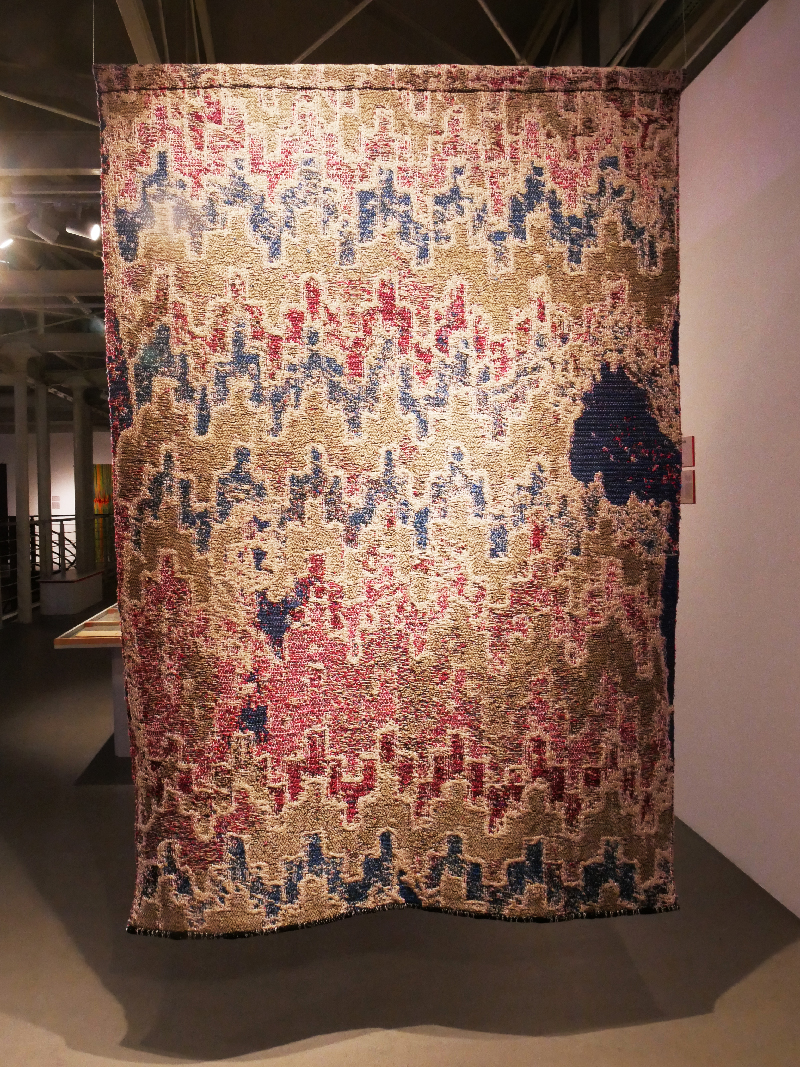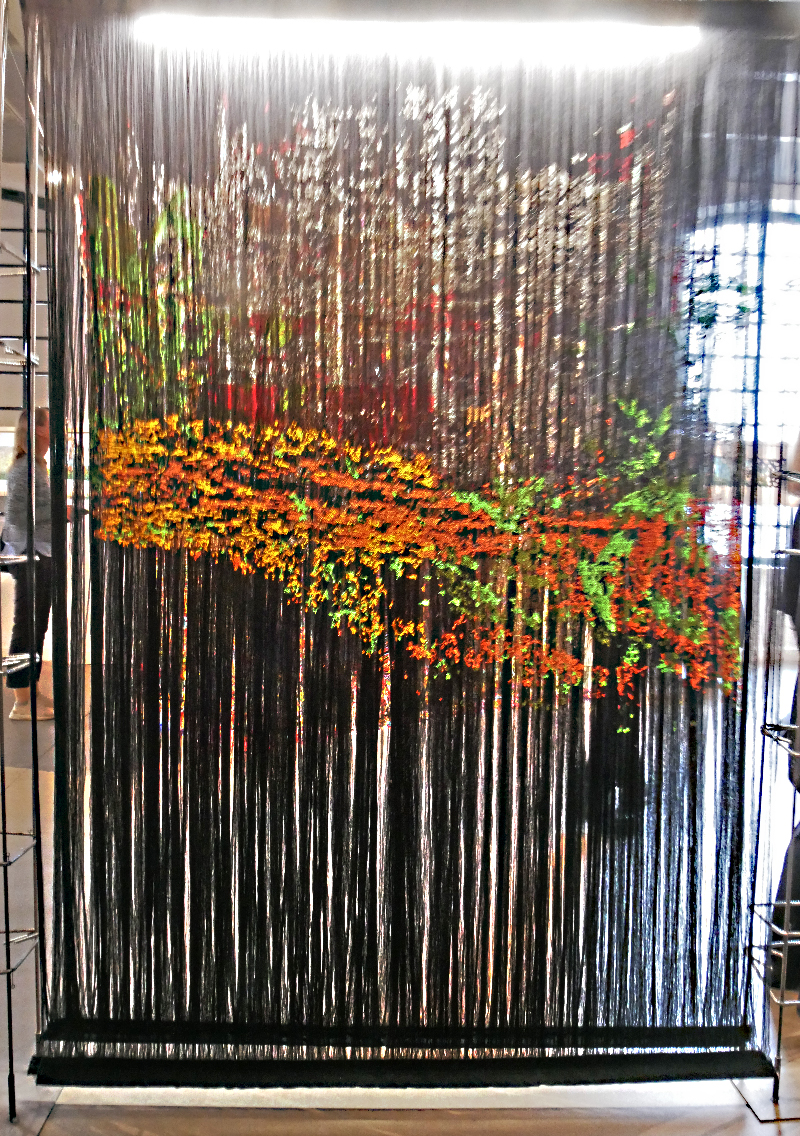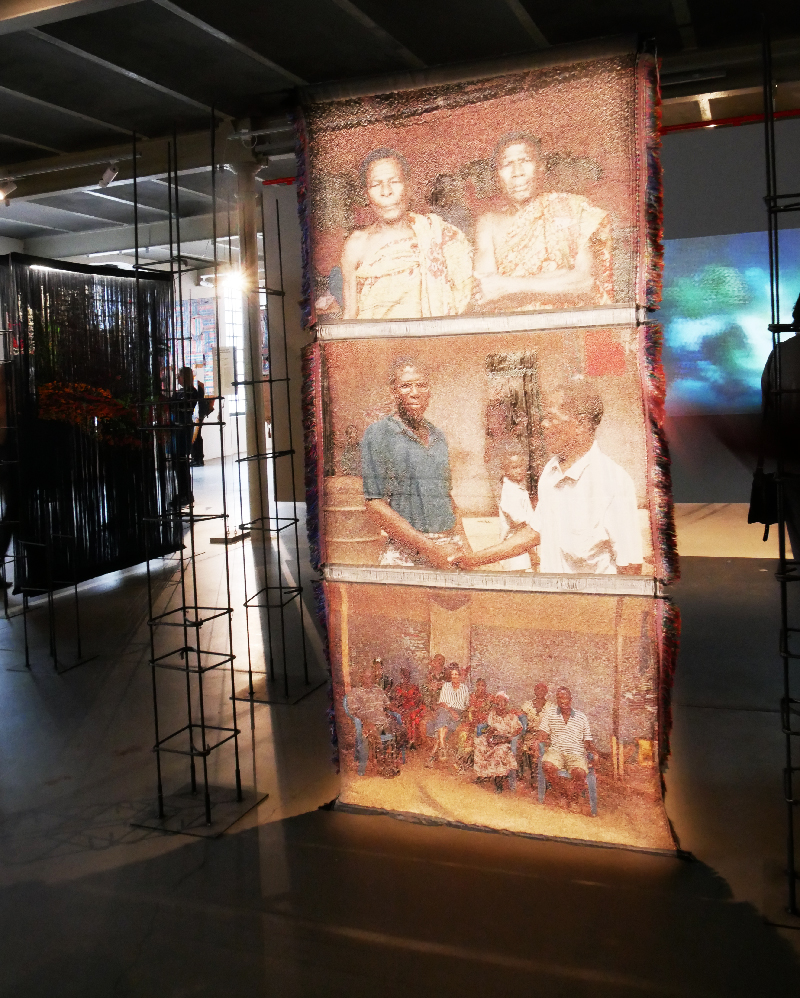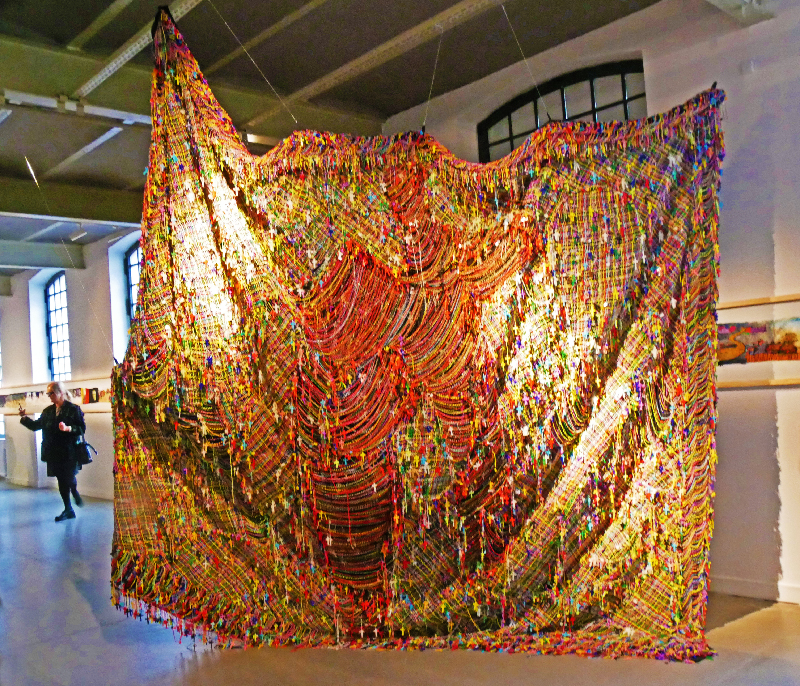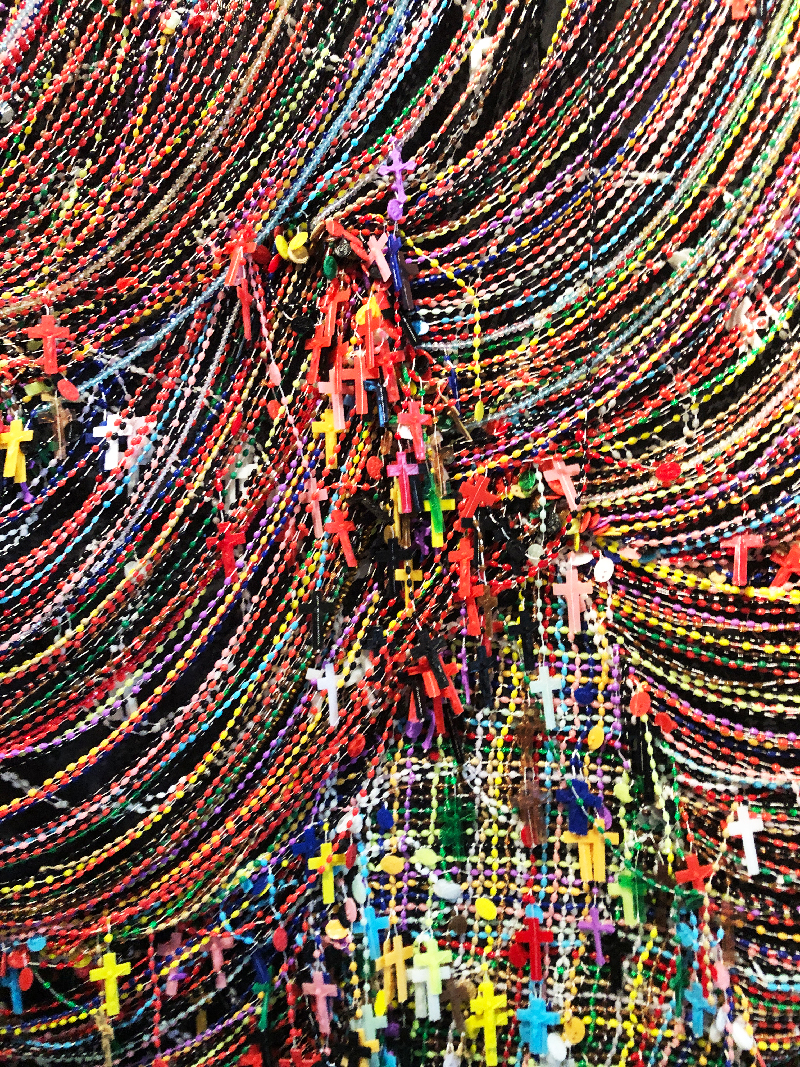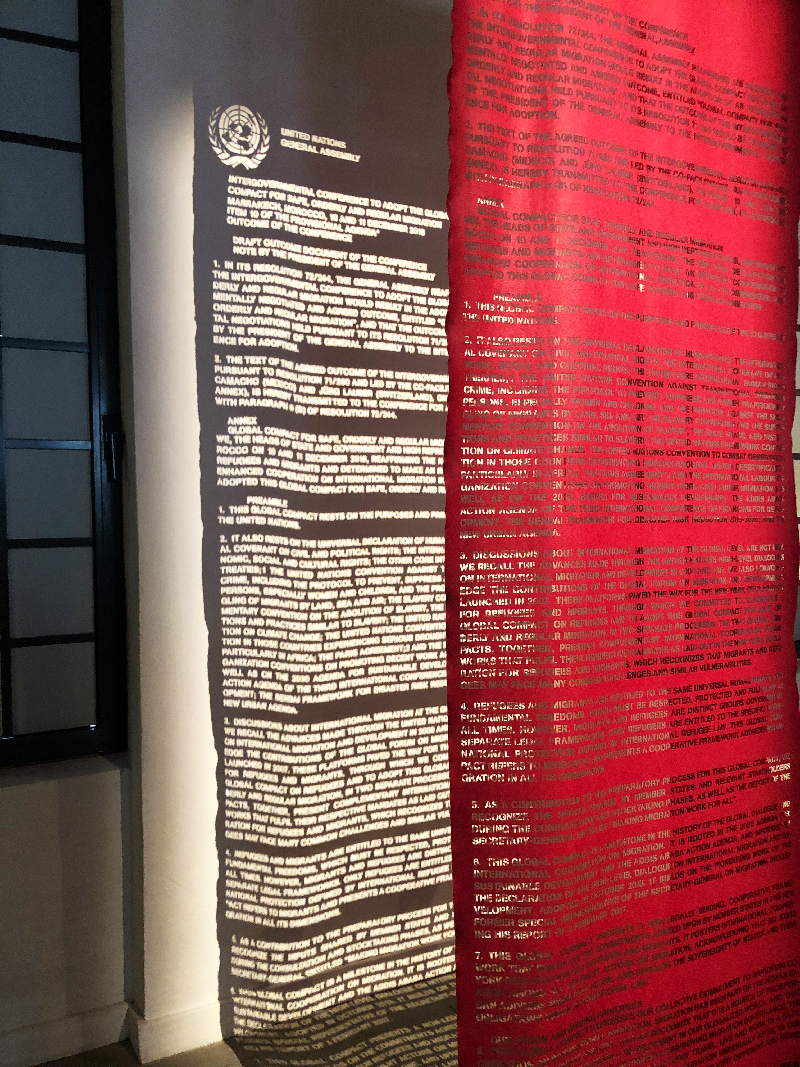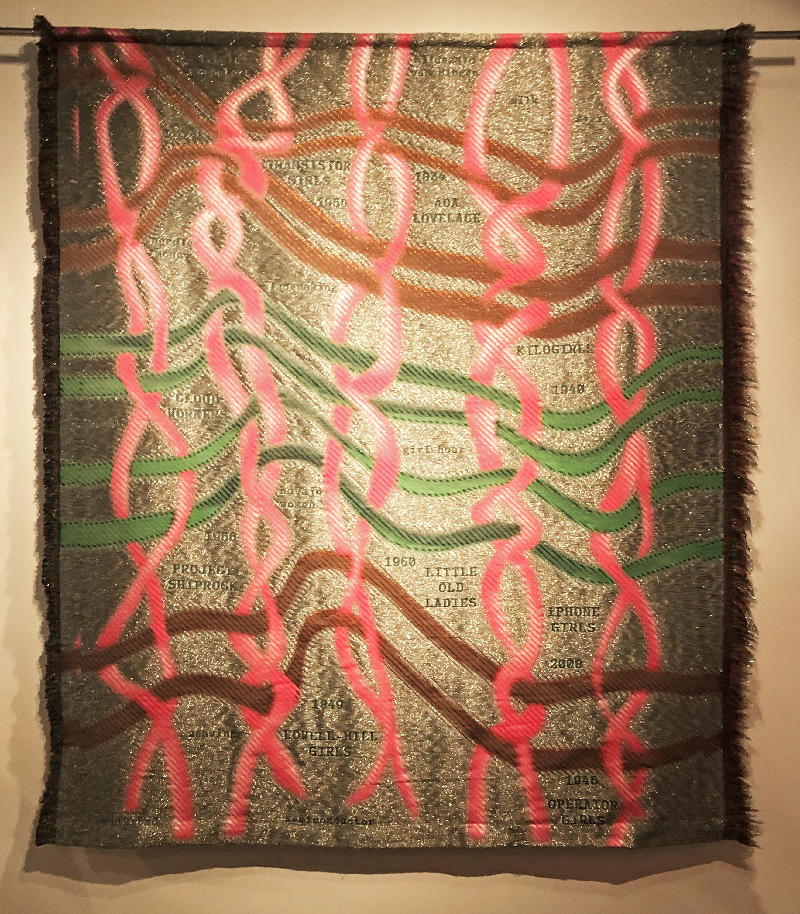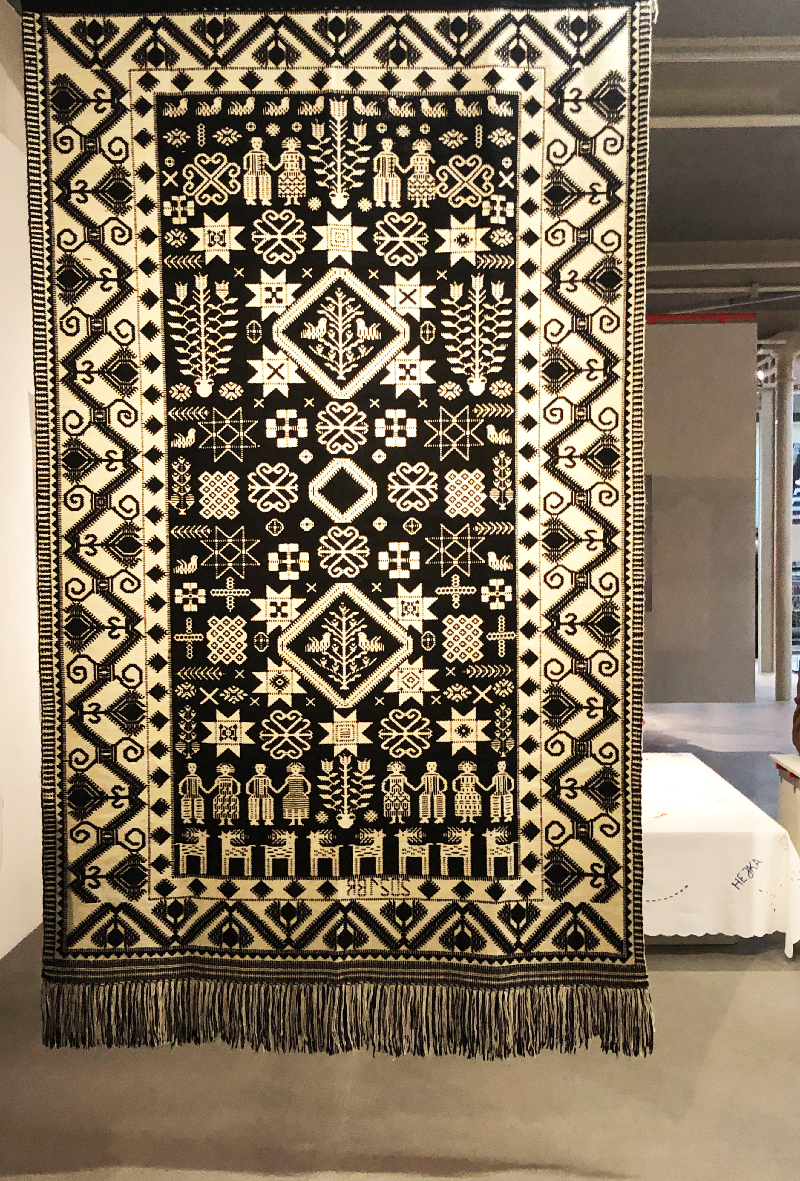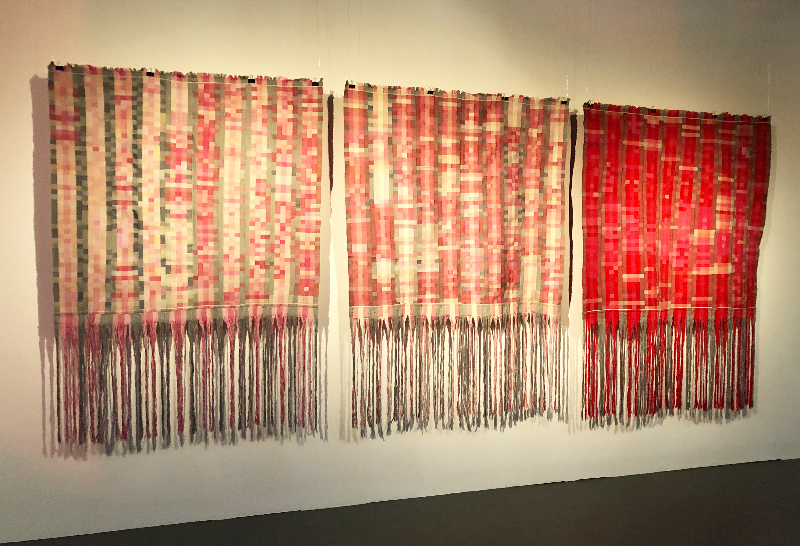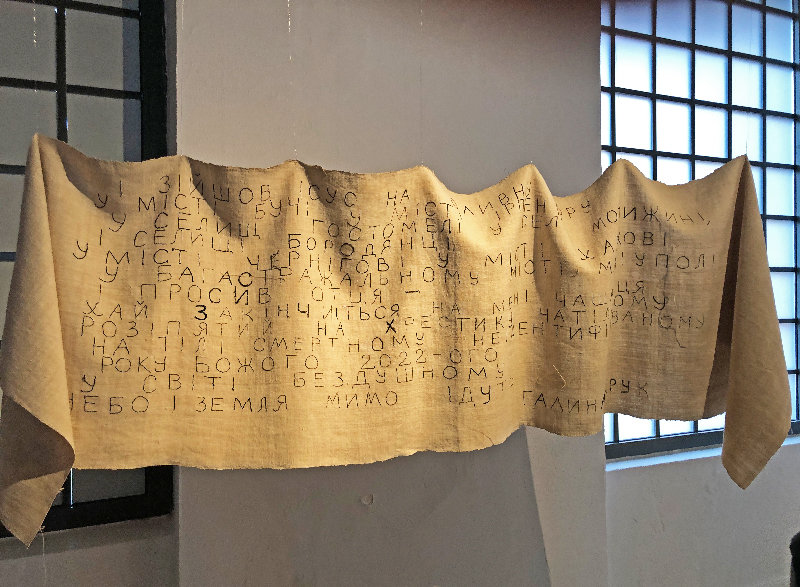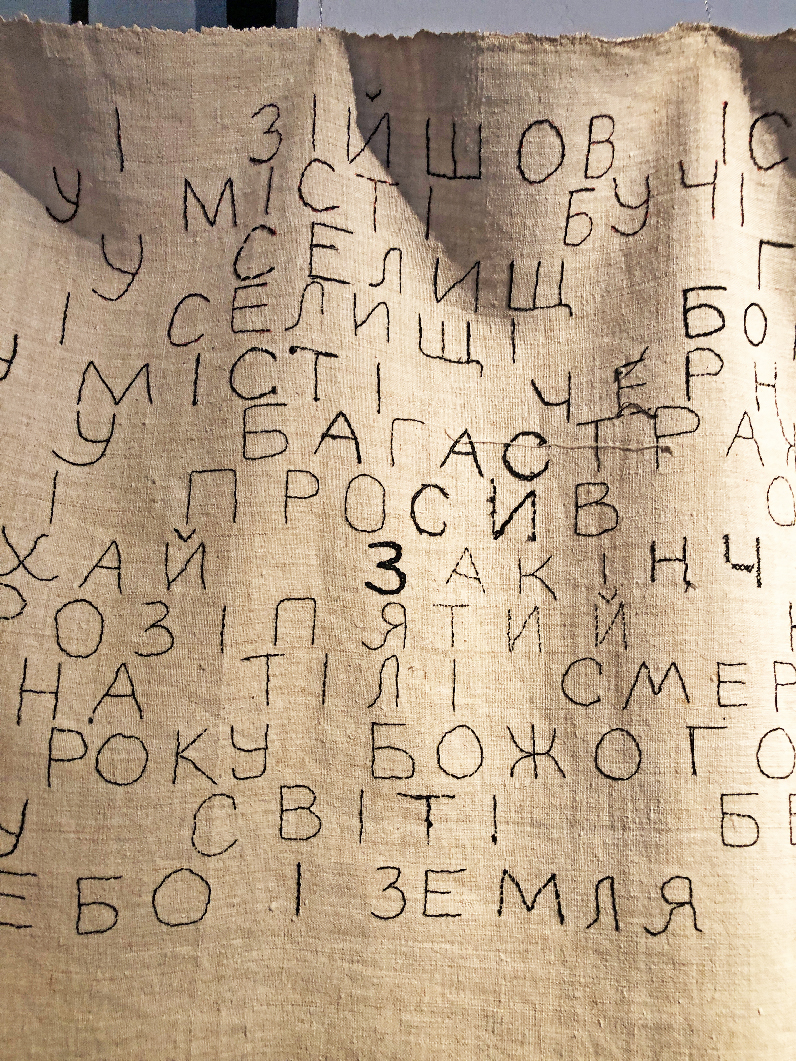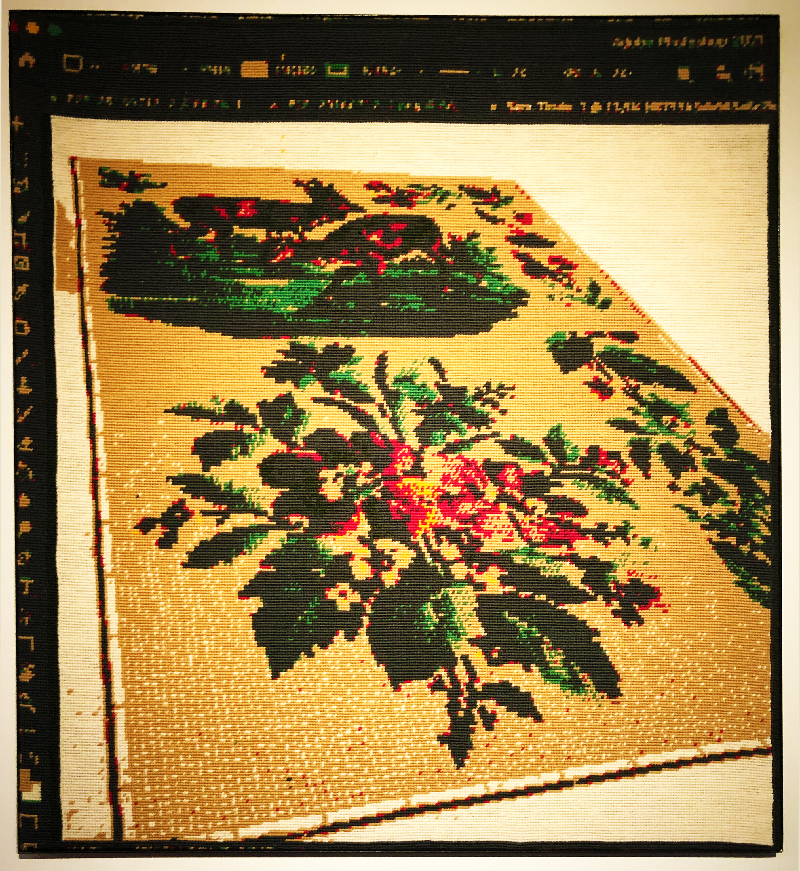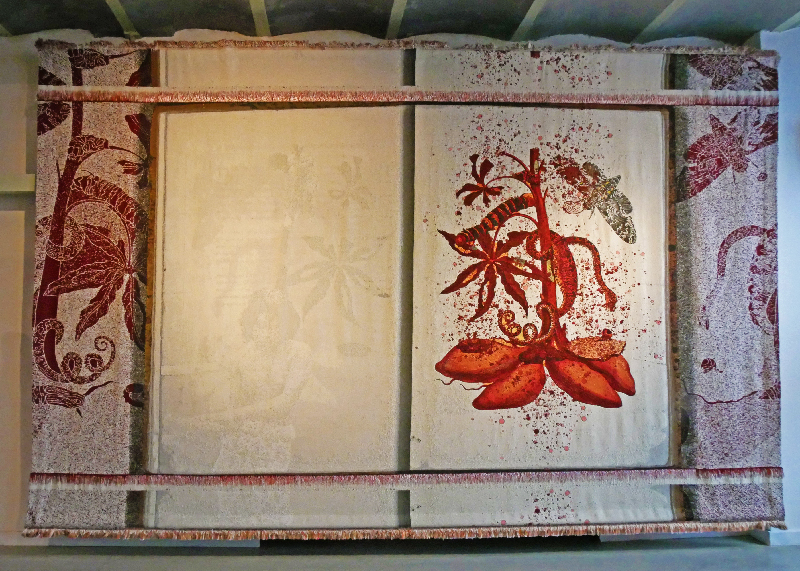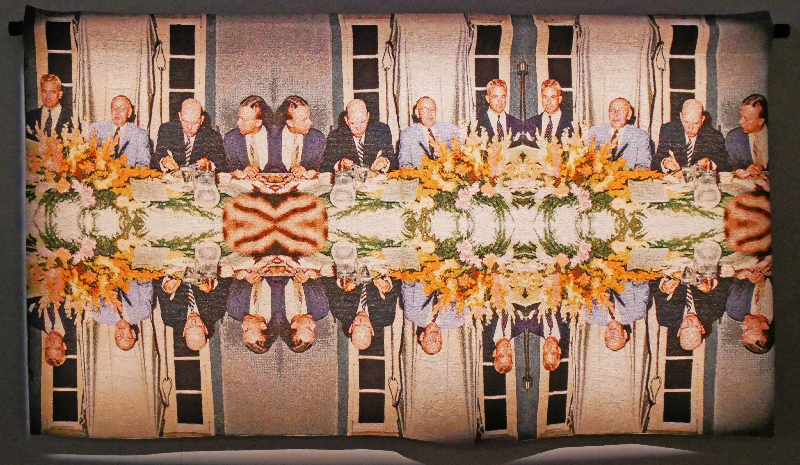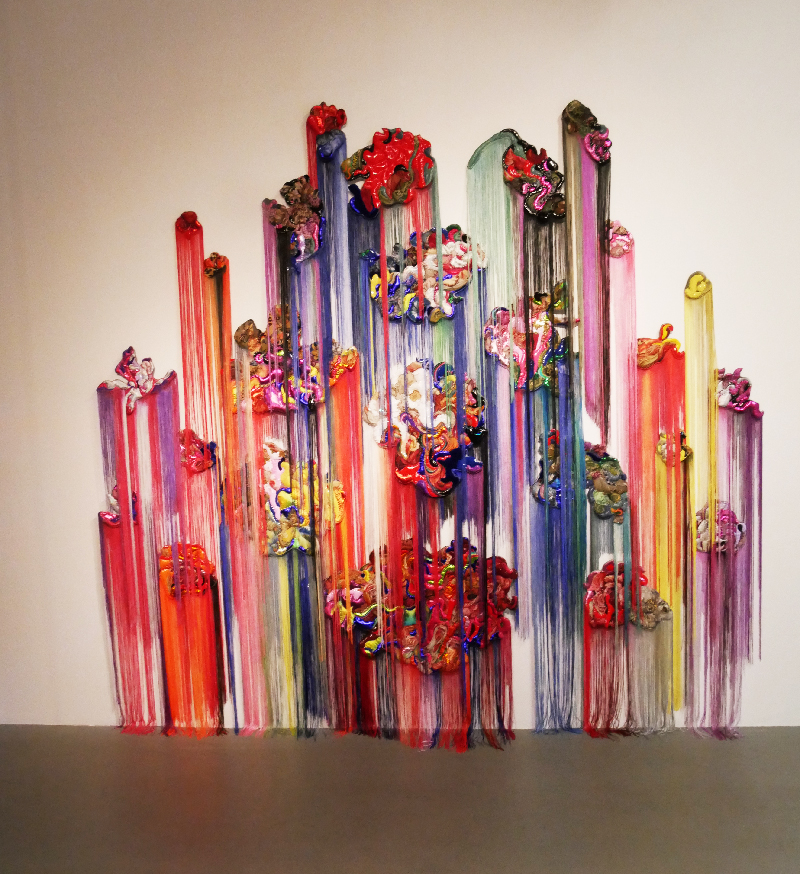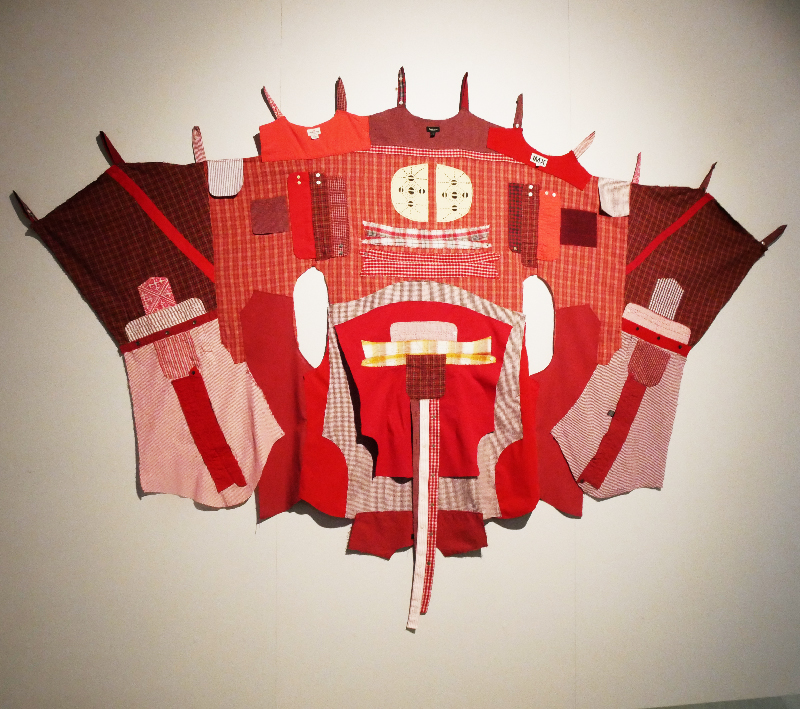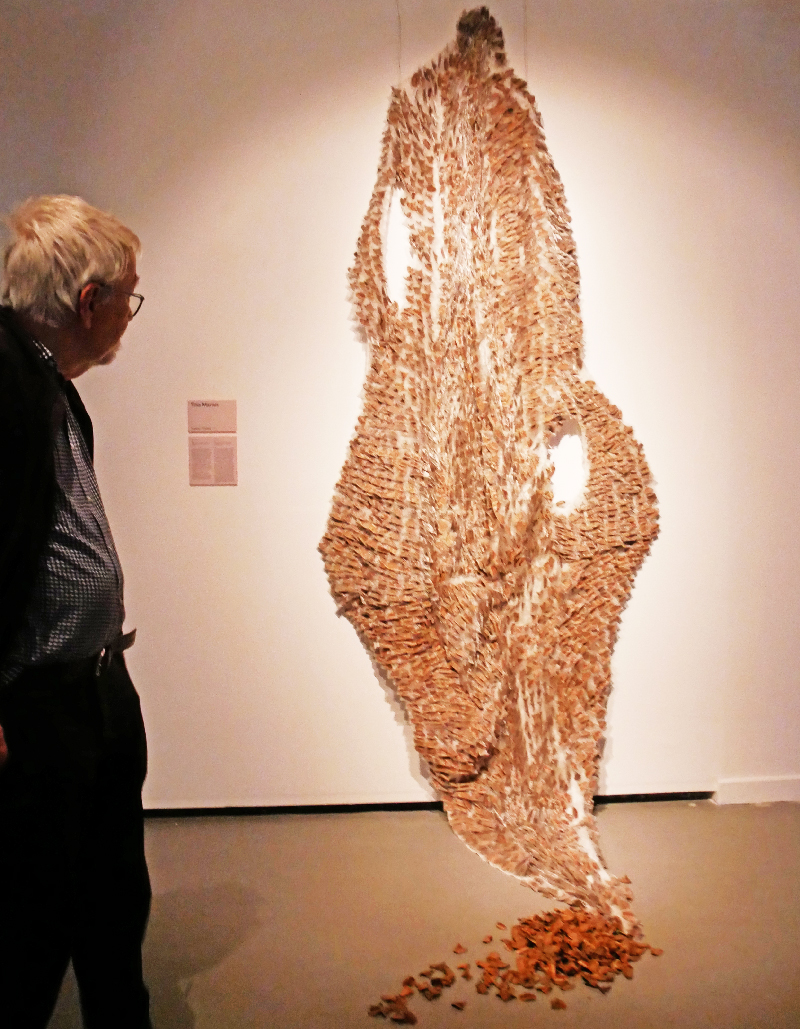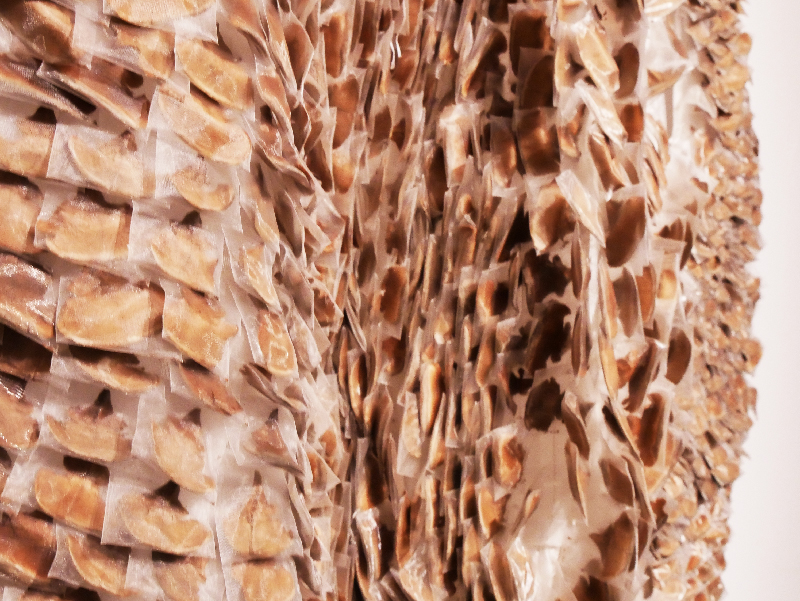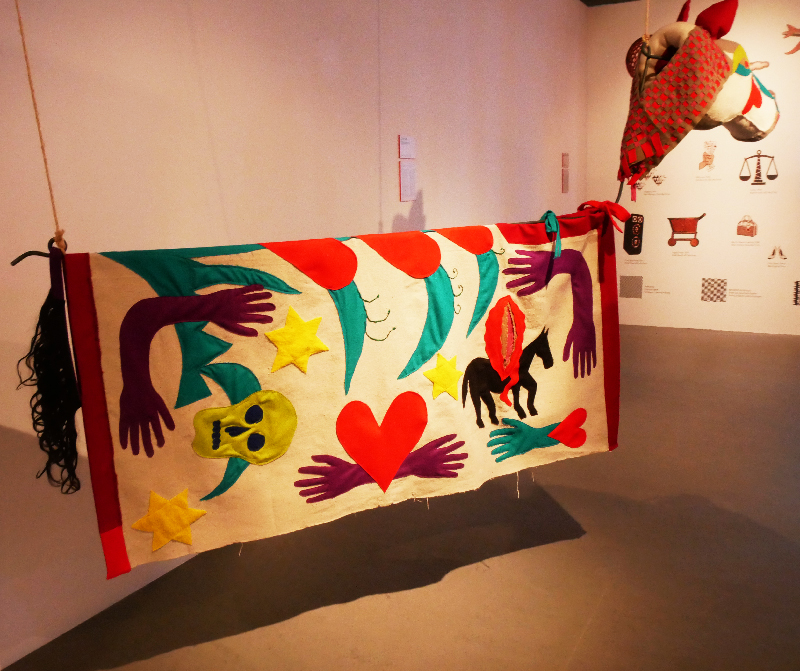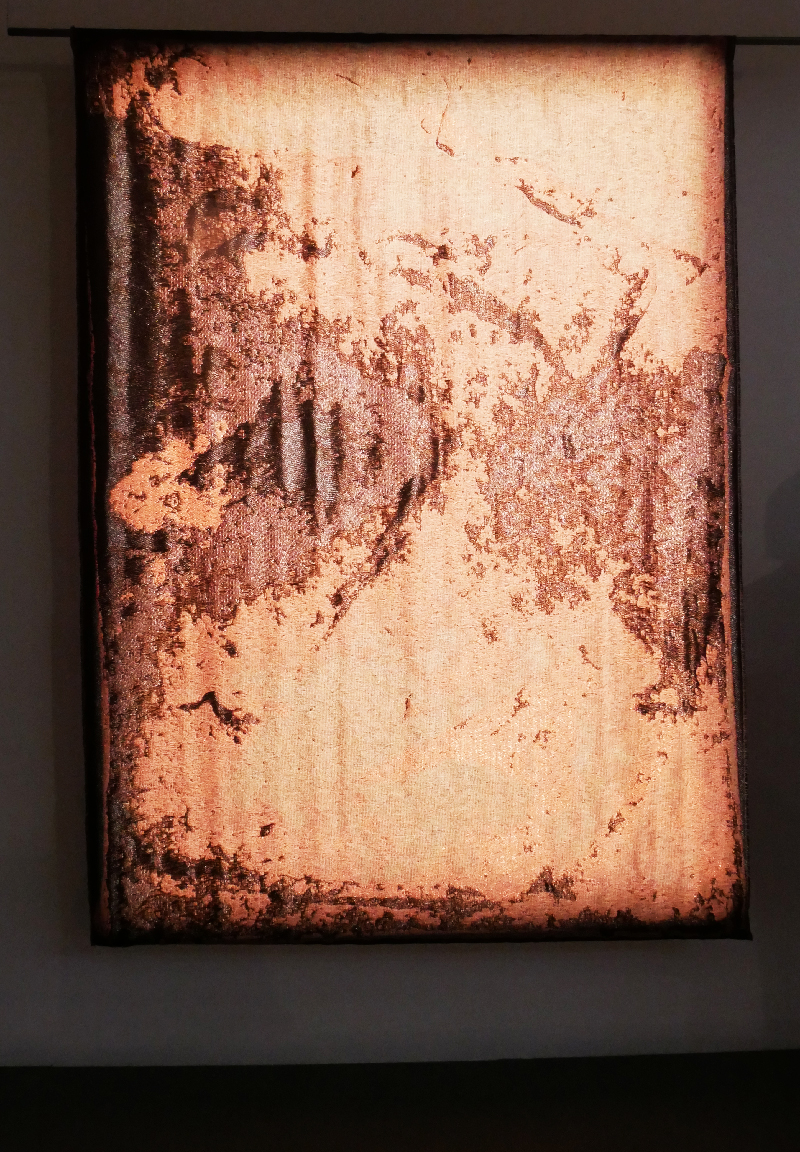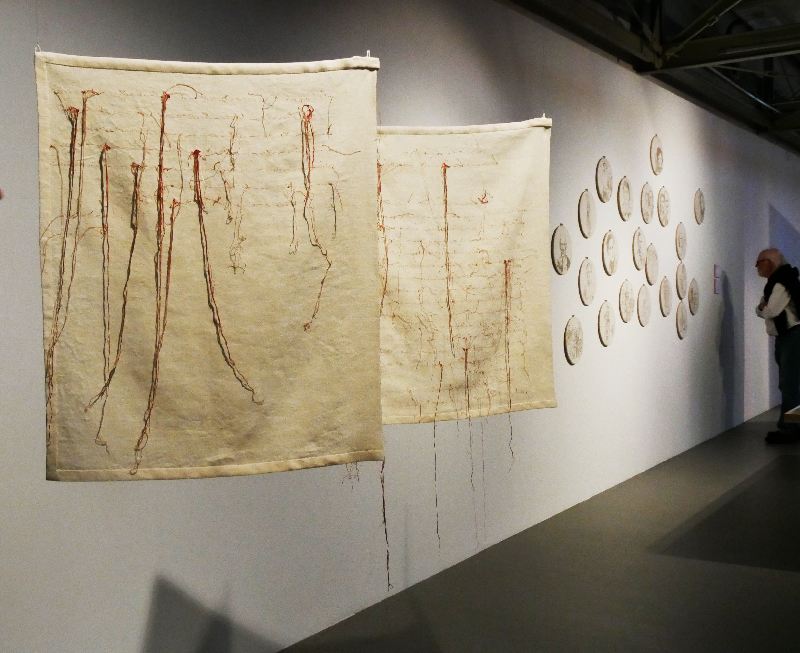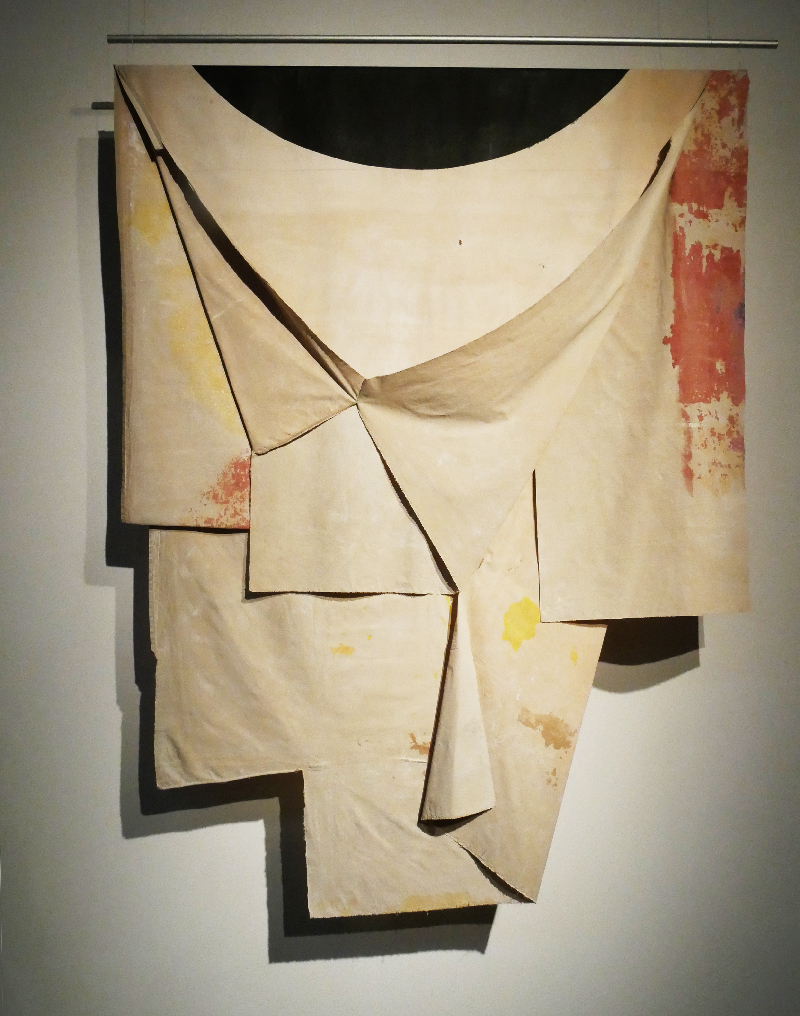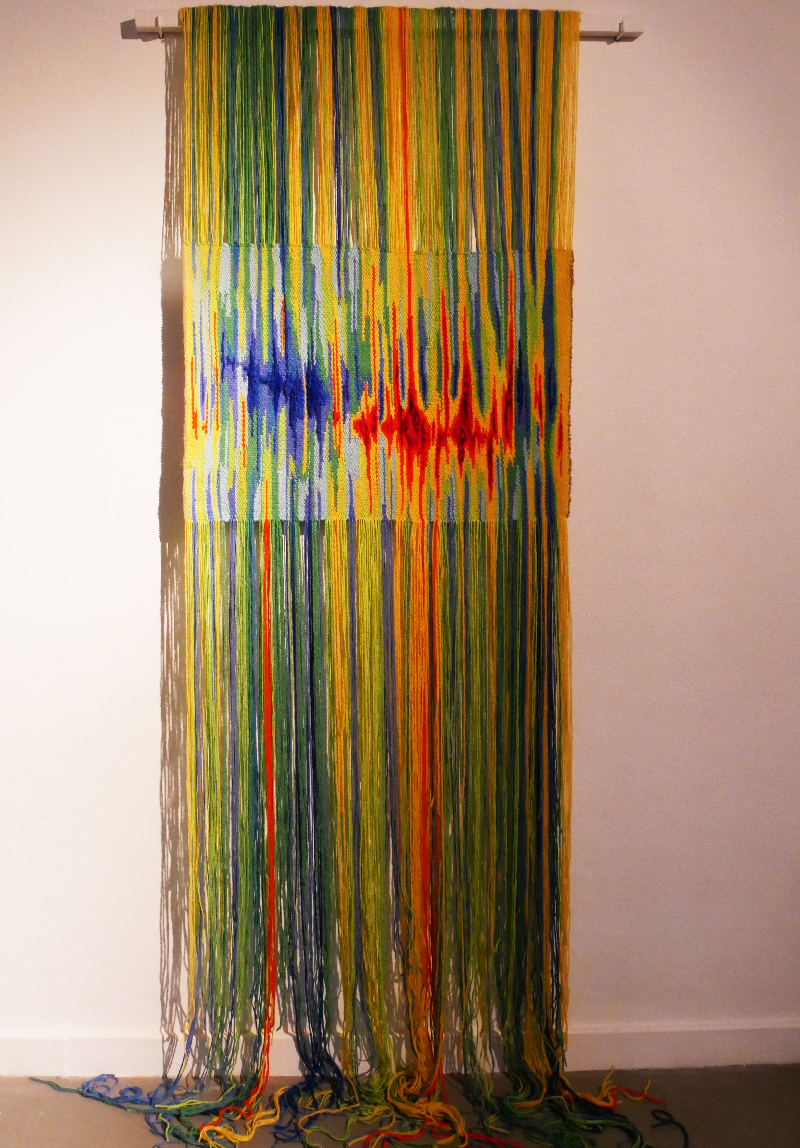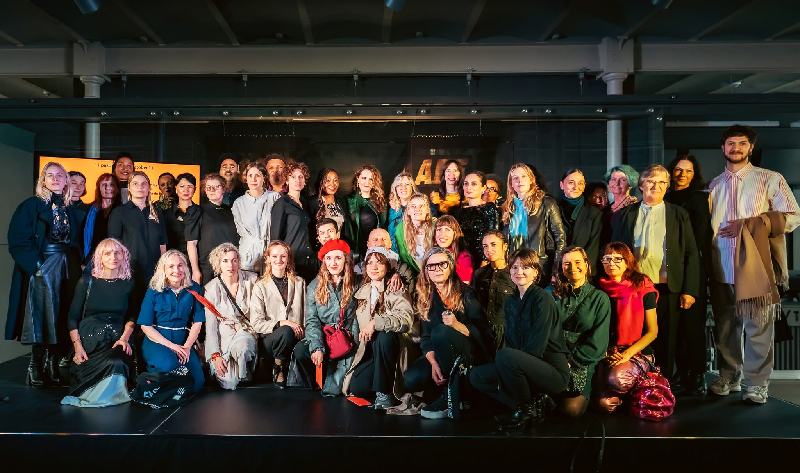
Das Ende der Internationalen Triennale der Tapisserie in Łódź?
18. Internationale Textiltriennale – Dekonstruktion / Rekonstruktion, Zentralmuseum für Textilien, Łódź, 11. Oktober 2025 – 12. April 2026
Umbenannt in die 18. Internationale Textiltriennale von Łódź/Polen, sollte diese älteste und renommierteste internationale Veranstaltung zeitgenössische Textilkunst aus der ganzen Welt präsentieren. Alle drei Jahre im Zentralmuseum für Textilien in Łódź ausgerichtet, zeigte diese Veranstaltung früher innovative Werke von Künstlerinnen und Künstlern, die die Grenzen des Textilen als Kunstform ausloteten – mit einer Verbindung von traditionellen Techniken mit modernen Ansätzen.Bis zur 16. Triennale erfolgte die Auswahl der Arbeiten durch nationale Beraterinnen und Berater – ein Verfahren, das zwar nicht völlig offen war, aber dennoch einen guten Überblick über den Stand der neuesten Textilkunst in den jeweiligen Ländern weltweit bot.
Für die 16. Triennale gab es dann erstmals eine offene Ausschreibung. Das übergeordnete Thema „Breaching Borders“ („Grenzen überschreiten“) war in sieben thematische Sektionen gegliedert: Migration und kulturelle Identität, physische Identität und Sexualität, Herkunft, Erinnerung, Psyche und Dialoge – allesamt mit dem Überschreiten von Grenzen in diesen Bereichen verbunden. Die daraus resultierende Auswahl entsprach jedoch nicht ganz den Erwartungen des Publikums. Einige ältere Besucher meinten, sie hätten „das alles schon einmal gesehen“, was auf einen Mangel an wirklich neuen, aufregenden Arbeiten hinwies.
Meine Meinung über die Notwendigkeit, die Textilkunst zu erneuern, unterscheidet sich von der der Kuratorin Marta Kowalewska. Ich stimme ihr in der Nutzung neuer Technologien und in einer Neubewertung des Handwerks zu, glaube aber nicht, dass eine Veränderung der Ikonografie hin zu wichtigeren Themen die Lösung ist. All das wurde bereits Ende der 1980er-Jahre getan, als Gerhard Knodel (damals Professor an der Cranbrook Academy) in der Jury der Biennale von Lausanne saß. Die damals verfassten Statements wurden als äußerst bedeutend angesehen – oft schien der Text sogar wichtiger als das Werk selbst. Textilkunst sollte sich nicht länger nur auf das Textile beziehen, sondern bestimmte Themen – vorzugsweise gesellschaftlich und politisch relevante – aufgreifen. Diese Tendenz bedeutete damals eine Art Erneuerung der Biennale von Lausanne, verlängerte deren Lebensdauer jedoch nicht.
Bei der 17. Triennale wurde das Verfahren der offenen Auschreibung wiederholt. Sie stand unter dem Thema „Entangled State“ („Verflochtener Zustand“), einem visionären Thema, das noch vor Ausbruch der Pandemie und des Krieges in der Ukraine festgelegt wurde. Für die Ausstellung wurde das Thema in vier Unterthemen unterteilt:
„The Civilized“ (Welche Art von Zivilisation erschaffen wir?)
„Represented States“ (z.B. Kindheitserinnerungen)
„Rootedness“ (z.B. unsere Verwurzelung in der Natur)
„The Horizons of Reality“ (die Grenzen zwischen Realität und virtueller Welt).
Jemand fragte mich auf Facebook, ob wieder die besten textilen Arbeiten gezeigt würden – wie früher, als pro Land drei Berater die Auswahl der Künstler trafen. Die gezeigten Werke waren vielleicht nicht die „besten“ im alten Sinne, aber durchaus interessante Arbeiten, die zum Nachdenken anregten. Ich war damals schon dankbar, dass die meisten Werke tatsächlich Textilkunst waren – und nicht bloß bildende Kunst, die zufällig Textilien verwendete.
Nun zur diesjährigen 18.Triennale: Es gab mehrere Änderungen. Zunächst wurde der Name geändert in „Internationale Textiltriennale“, jedoch ohne Erklärung seitens des Triennale-Komitees, der Kuratoren oder der Jury. Das Wort „Tapisserie“ verschwand – und mit ihm, so schien es mir, auch die eigentliche Textilkunst. Ich zählte nur etwa 26 Werke, die ich als „Textilkunst“ bezeichnen würde (darunter auch einige schwache Arbeiten), unter den 70 ausgewählten Arbeiten. Nur etwa 27 Künstlerinnen und Künstler hatten überhaupt einen textilen Hintergrund – nicht entscheidend, aber doch ein Hinweis. Natürlich mögen die anderen Werke ausgezeichnet gewesen sein – aber eben keine Textilkunst!
Weitere Neuerung: Diesmal gab es zwei Kuratorinnen, Marta Kowalewska und Bukola Oyebode-Westerhuis, die das Thema „Deconstruction / Reconstruction“ („Dekonstruktion / Rekonstruktion“) für diese Ausstellung auswählten. Das Thema ist inspiriert von den Herausforderungen der Gegenwart, die ein Umdenken alter Systeme und die Suche nach neuen Wegen für eine bessere Zukunft verlangen. Die Kuratorinnen baten die teilnehmenden Künstlerinnen und Künstler, ein Portfolio einer Werkreihe inklusive Beschreibungen einzureichen, um daraus die endgültigen Werke auszuwählen. Dieses Verfahren machte die Ausstellung eher zu einer kuratierenden Auswahl als zu einem offenen Aufruf. Gibt man ein Thema vor, erwartet man logisch ein für diesen Anlass geschaffenes Werk – das Einreichen eines Portfolios dagegen deutet auf eine kuratierte Ausstellung hin, die die Sichtweise der beiden Kuratorinnen widerspiegelt
Die internationale Jury wählte ausschließlich die Preisträgerwerke aus. Da die Jury erneut eher auf bildende Kunst ausgerichtet war, wurden vor allem Arbeiten ausgezeichnet, in denen die erzählerische Ebene dominierte – während das Textile eine Nebenrolle spielte. So geschah es, dass zwei der Preise gar keine echte Textilkunst betrafen, sondern Kunst, die Textilien lediglich verwendete:
Die Goldmedaille ging an Aziza Qadyri (Usbekistan) für „Her Stage (II)“, eine weiche Skulptureninstallation über ihre Großmutter, die ihren Traum, Volkstänzerin zu werden, aufgab. (Ich konnte keine besondere textile Bearbeitung erkennen – der Inhalt der Geschichte war entscheidend, nicht das Material.)
Die Silbermedaille erhielt Łukasz Wojtanowski (Polen) für „Corpus Christi Procession (green)“, ein echtes Textilkunstwerk, auch wenn ich schon bessere Arbeiten von ihm gesehen habe.
Die Bronzemedaille ging an Charlott Marcus, eine schwedische Künstlerin mit Wohnsitz in Amsterdam, für„Partition #8“, eine Mixed-Media-Audioinstallation aus Vorhängen eines psychiatrischen Krankenhauses – mit einem narrativen Bezug zu dessen Bewohnern. Hier standen die Vorhänge nicht im Mittelpunkt, sondern die Erzählung.
Weitere Änderungen:
Frühere Triennalen zeigten parallel die Nationale Ausstellung Polnischer Tapisserie, zuletzt unter dem Titel „Material Fatigue“, ebenfalls im Zentralmuseum für Textilien. Kurator Jakub Gawkowski wollte „die Position der Textilkunst innerhalb der breiteren polnischen Kunstlandschaft hervorheben“, was jedoch enttäuschend war – insbesondere für diejenigen, die die polnische Textilkunst kennen und bessere Werke erwartet hatten.
Diesmal wurde die in den Niederlanden lebende Kuratorin Bukola Oyebode-Westerhuis gebeten, eine Ausstellung afrikanischer Kunst von Frauen zu zeigen: „Rhizomatic Portals: Ways of Knowing“, ganz im Sinne des Fokus auf den „Globalen Süden“. Noch nie zuvor waren so viele afrikanische Länder bei der Triennale vertreten (Uganda, Ghana, Nigeria, Äthiopien, Senegal, Südafrika) – ebenso Länder, die vermutlich erstmals teilnahmen (Jemen, Bosnien, Kasachstan, Usbekistan, Haiti, Sri Lanka, Mongolei, Taiwan). Viele der Künstlerinnen und Künstler leben allerdings in London, Paris oder Amsterdam.
Die meisten Teilnehmenden Künstler kamen aus Polen (15), den Niederlanden (12), Frankreich und den USA (je 7), Deutschland (5), der Ukraine (3), sowie Belgien, Großbritannien, Griechenland und Österreich (je 2)
.
Begleitveranstaltungen der diesjährigen Triennale waren wieder einige Performances, ein sehr interessanter Vortrag von Ibrahim Mahama (der ausdrücklich betonte, sich nicht als Textilkünstler zu sehen), sowie die Young Textile Art Triennale (YTAT), organisiert von der Streminski-Akademie der Schönen Künste in der Städtischen Kunstgalerie Łódź.
Weitere Textilkunstausstellungen – wie jene über Jonatan E. Jurkowski im Book Art Museum – wurden nicht als Begleitprogramm erwähnt, obwohl dort echte Textilkunst in einer magischen Atmosphäre zu sehen war. Mehr über diese textilen Ereignisse in Łódź wird später veröffentlicht!
Mein Fazit:Dieses einst so berühmte Textilereignis von Łódź ist mittlerweile zu einer ganz normalen Veranstaltung der bildenden Kunst geworden – wie es sie in jedem europäischen Land mehrfach gibt. In Bezug auf echte Textilkunst darf man heute wohl mehr von der Contextile in Portugal oder der Triennale in Riga (Lettland) erwarten – dort gibt es noch eine wirklich offene Ausschreibung und eine fachkundige Jury mit Textilkenntnissen.
Beatrijs Sterk, October 2025
P.S. Ich werde Reaktionen sammeln und weiterleiten, Sie können auch direkt an das Zentrale Textilmuseum in Lodz schreiben: sekretariat@cmwl.pl mein email is bsterk@gmx.net
